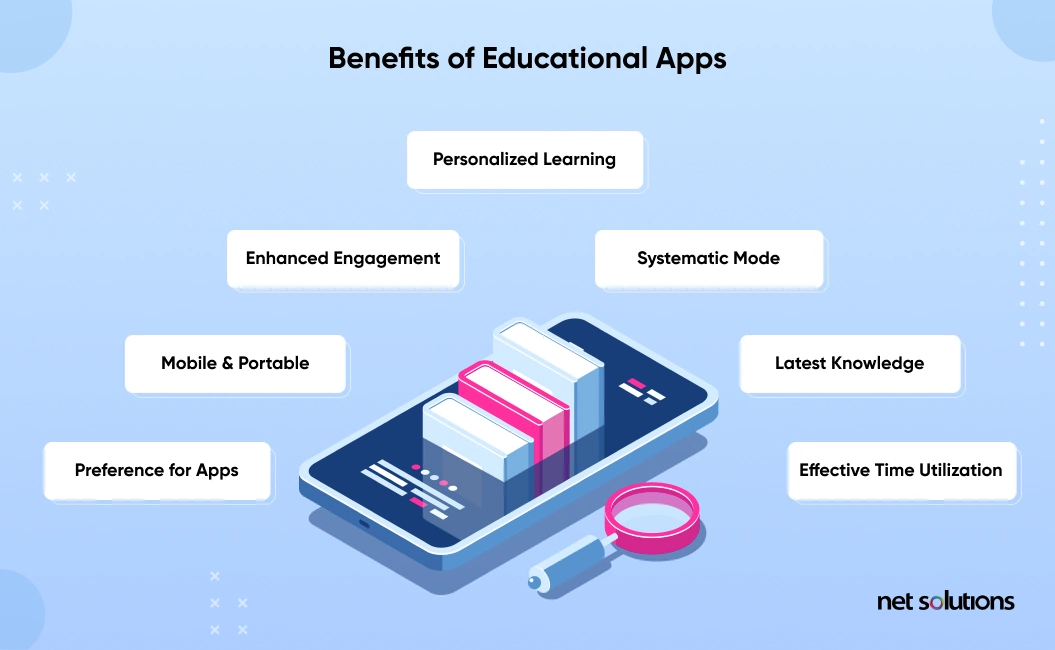Introduction
The traditional classroom setup with textbooks and chalkboards is quickly becoming a thing of the past. In its place, we’re witnessing a paradigm shift in education, driven by the widespread adoption of educational apps and software. These digital tools are taking learning to new heights, providing a dynamic and engaging platform for students to explore, discover, and grow.
In this blog post, we’ll delve deep into the world of educational apps and software, exploring the reasons behind their rising popularity, showcasing some of the top choices available, and offering valuable insights for users at every level of education.
The Rise of Educational Apps and Software
The integration of technology into education is nothing new, but the rapid advancement of educational apps and software has opened up countless possibilities for both students and educators. These tools have gained immense popularity for several reasons:
Accessibility: One of the most significant advantages of educational apps and software is their accessibility. With a smartphone or tablet, students can access a world of knowledge from anywhere, at any time. This accessibility is especially beneficial for remote learning and students with diverse needs.
Engagement: Educational apps and software are designed to be interactive and engaging. They incorporate multimedia elements, gamification, and real-time feedback to keep students motivated and interested in the subject matter.
Personalization: These tools often include features that allow for personalized learning experiences. Students can progress at their own pace, receive tailored content, and target their specific areas of improvement.
Real-World Application: Many educational apps and software are designed to simulate real-world scenarios and problem-solving. This not only enhances learning but also prepares students for practical applications of their knowledge.
Data-Driven Insights: Educators and parents can monitor a student’s progress through data analytics provided by these tools. This data helps identify areas where a student might be struggling and where they excel, enabling a more targeted approach to education.
Top Educational Apps and Software
Now that we understand why educational apps and software are in high demand, let’s explore some of the top options available today. These applications cater to various educational levels, from preschool to postgraduate studies. Here are a few noteworthy ones:
Khan Academy: Khan Academy is a free online platform that provides a wide range of educational resources, from math and science to history and art. Its interactive lessons and exercises help students build a strong foundation in various subjects.
Duolingo: If you’re looking to learn a new language, Duolingo is the go-to app. It offers language courses in over 30 languages, making language learning fun and accessible for everyone.
Google Classroom: Google Classroom is a comprehensive learning management system that simplifies the distribution and grading of assignments for both teachers and students. It also facilitates communication and collaboration within a virtual classroom.
Scratch: Scratch is an excellent tool for teaching coding to kids. It’s a visual programming language that allows children to create interactive stories, games, and animations while learning the basics of coding.
Coursera: For those seeking higher education and specialized courses, Coursera offers a vast catalog of online courses from top universities and institutions. It’s an excellent resource for professional development and lifelong learning.
Rosetta Stone: Known for its immersive language learning programs, Rosetta Stone offers a range of courses to help users become fluent in various languages.
Quizlet: Quizlet is a versatile study tool that allows students to create flashcards, practice quizzes, and other study materials to reinforce their learning.
Getting the Most Out of Educational Apps and Software
To make the most of educational apps and software, here are some tips for students, parents, and educators:
Set Clear Goals: Determine what you want to achieve with the use of these tools. Whether it’s improving math skills, learning a new language, or mastering a specific subject, having clear goals will guide your usage.
Establish a Routine: Consistency is key. Create a daily or weekly schedule for using educational apps and software to ensure that learning becomes a regular part of your life.
Explore Diverse Options: Don’t limit yourself to just one app or software. Explore different tools to find the ones that best suit your learning style and needs.
Seek Support: For parents and educators, offering support and guidance to students using these tools is essential. Be ready to answer questions and provide assistance as needed.
Balance Screen Time: While these tools are valuable, it’s important to strike a balance between screen time and other activities. Ensure that students have a well-rounded lifestyle.
Stay Updated: Technology evolves rapidly. Stay updated with the latest features and offerings of educational apps and software to leverage their full potential.
The Future of Education
Educational apps and software are not just a trend; they represent the future of education. As technology continues to advance, we can expect even more innovative tools that will further enhance the learning experience. Virtual reality, augmented reality, and artificial intelligence are likely to play increasingly prominent roles in the educational landscape.
The benefits of these tools are not limited to the classroom; they also extend to professional development, lifelong learning, and skill enhancement. The ability to access information and education anytime, anywhere is a powerful tool for personal growth and societal progress.
Conclusion
Educational apps and software have transformed the way we learn and teach, making education more accessible, engaging, and personalized. Whether you’re a student, a parent, or an educator, these digital tools offer a wealth of resources to help you achieve your educational goals. By staying informed, setting clear objectives, and incorporating these tools into your learning routine, you can harness the power of technology to shape a brighter future for education. Embrace the digital revolution, and open the door to endless opportunities for learning and growth.


